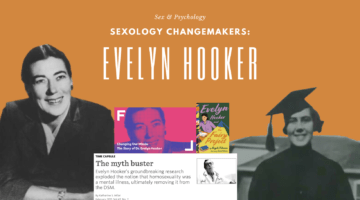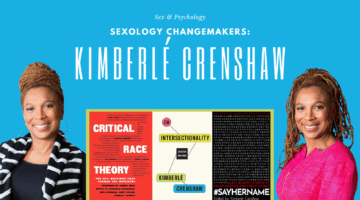Why I Started Publishing In Open-Access Journals, And Why You Should Too
February 17, 2014 by Justin Lehmiller
As a graduate student, I was taught that I needed to publish, publish, publish if I ever wanted a job. So I spent countless hours conducting study after study and carefully writing up the results. The fruits of my labor were submitted to the top journals in the field where I quickly discovered the nightmare that is modern academic publishing. It routinely took four to six months to hear anything at all from the editors (and in one case, it took a year), and much of the time, the decision was a flat out rejection. While the reviewers and editors almost invariably saw something interesting and worthwhile in my efforts, all too often I was told that it just wasn’t “enough of a contribution” for a journal that accepts less than 15% of papers submitted. I can’t begin to describe how many times I was told something to the effect of “I really like this paper and it deserves to be published…just not here.” It all felt very arbitrary because no one was really judging my work on its merits—instead the reviews had a very subjective quality, focusing on questions such as: Is it “worthy” of this journal? Does it make a “big enough” contribution to the literature? Is this paper going to get cited a lot?
After each rejection, I almost always did the same thing: I made several changes to the paper based on the reviews, sometimes going as far as collecting new data in order to making it even stronger, before submitting it to another journal, where the months-long review process began anew. Sometimes, I got lucky and was asked to submit a revision, followed by another revision, and another after that. In fact, it was not uncommon to go through four rounds of review before ultimately getting an acceptance, with each round of review taking at least 4-6 weeks, and sometimes much longer. For papers that were eventually accepted, a few more months (and, in some cases, years) were added to the clock while the manuscript was copyedited and added to the journal’s publication queue. All in all, it was a solid one to three year process for a given paper to see the light of day. That’s how cutting-edge science works these days—or at least that’s how the modern field of psychology works.
Is the publication process worth the time and hassle?
But all of this effort and frustration was totally worth it because all of my published papers were widely read, right? Not so much. At most journals, the scientist willfully hands over their copyright to the publisher for free upon acceptance. In exchange for our work, the publishing house checks the articles for typos, formats them to their desired standards, makes them look pretty, and then locks our papers away where only paid subscribers can access them. For example, if you wanted to read my article on secret romantic relationships published in Personality and Social Psychology Bulletin, you would have to purchase access to it from the publisher for the bargain price of $30. I’m not sure how it became standard practice to charge more for a single journal article than for any book on the New York Times bestseller list, especially given that academic publishers don’t pay any royalties to authors and any monkey with a word-processing program can turn a manuscript into a decent-looking PDF.
Given these absurd prices, almost no one buys journal articles on their own. The only practical way to access these articles therefore involves a trip to a university library. The library will have it, assuming that it has been paying the $1998/year journal subscription fee (and some journals charge much more). Oh, but many university libraries aren’t open to the general public, so this may not even be an option for you. I would love to just give you the article or post it here on this website to make things easier, but I can’t—I gave away the copyright, remember?
To make a long story short, I spent the last decade of my life working very long hours in order to write a bunch of papers that I freely gave to the publishing industry. I did this because it is what I was told I needed to do in order to get a job and to keep it. However, with all of my papers now locked safely away behind paywalls, the sad reality is that literally tens of people have read them, given how few people actually have access to my work. Of course, I’m not saying this has been a total waste of my time—I mean, I did help enrich a lot of needy publishing houses along the way by donating my life’s work to them.
In all seriousness, though, I have come to the realization that I can no longer be a part of this system. I don’t want to spend years trying to publish each and every paper that I write. Sinking so much time into each paper makes me a less productive scholar by taking my attention and energy away from other projects. This system also makes my work less relevant when it actually comes out in print because what I am publishing today is the research that I conducted three or four years ago. Above all else, this system means that my work is largely inaccessible and owned by some gigantic corporation that is profiting handsomely from exorbitant library subscription costs, which is something I just don’t feel very good about.
I am not upset because I wish I were profiting from my research–what bothers me is that people who want to access my research have a hard time doing so. In my view, scientific findings produced by university researchers are a public good, something that we should all have equal access to. Why? Because all of this research is footed by the taxpayers in one way or another. They pay the salaries of all university researchers in the form of government research grants, federal student loans, as well as subsidies and tax breaks given to the schools by the states. In my book, if you’re paying us to do the work, the least we can do in return is let you read our papers for free. But that’s not how it works. Instead, we hand our papers over to someone else who, in turn, charges you a hefty sum to read the work that you paid us to conduct. If the fees were reasonable and publishers were just recouping the costs associated with production and taking a small profit for their services, that would be one thing—but that’s not how it works. The publishers own a product that is in demand (science), and they sell access to it for as much as they can. Don’t believe me? Consider that just one publishing house, Elsevier, raked in over $1 billion in profits in the year 2010 alone. That’s just one scientific publisher in one year! As you can see, limiting access to knowledge is a huge money-maker.
Is there a solution?
There is an answer to the myriad problems with the traditional publication process, and that is open-access publishing. Editors at open-access journals are less likely to make arbitrary publication decisions based on subjective factors like how “worthy” the paper is because these journals are not constrained by printing costs. At traditional print journals, no matter how many submissions the journal receives in a given year, they can only publish a certain number of them because each journal is allocated a limited number of pages. This results in an artificially low acceptance rate and means that a lot of perfectly good science is rejected simply because there’s no room to print it. An unfortunate byproduct of this reality is that it
creates a huge strain on the peer review system because those perfectly good papers then need to be re-reviewed when they’re submitted to other journals. Peer review is a limited resource conducted on a volunteer basis. So why in the world are we burdening this system by repeatedly reviewing good papers over and over?
The ultra-low acceptance rates have another unfortunate side effect in that they create an incentive for scientific dishonesty. In order to get one of those rare acceptances, a paper has to be perfect. There has to be a “clean” story with very clear findings. In psychology, however, our data are often messy. As a result, some scientists resort to questionable research practices because they need a paper published quickly or because they want their paper published in a “top” journal. It has almost become standard practice at some journals to drop variables that produce conflicting results or to only reporting the results of the studies that “worked,” while pretending like studies that produced different results never happened. These and other practices are weakening the science that is published and contributing to psychology’s current replicablity crisis.
Because open access journals are not constrained by printing costs, they do not need to keep acceptance rates artificially low. If the science is good, there’s a home for it, even if the data are “messy.” Beyond this, the other major benefit of open-access journals is that they make all of the work that is published accessible to the public. Anyone with an internet connection can read it for themselves, regardless of whether they are affiliated with a university. This allows the public a unique opportunity to actually engage with science.
Despite these benefits, “open-access” is a dirty word to some scientists, who believe that the peer review process is “watered down” at such journals and/or that open access journals are just a “pay-to-publish” enterprise that will print any and all submissions as long as the author pays a fee. Granted, there are some shady open-access journals out there where the “peer review” is a joke and the journal is a thinly veiled scheme designed to bilk authors out of a few bucks (which, in my view, is no less disgusting than paywall journals that bilk the taxpayers out of billions just because they can). Fortunately, however, the bad journals are relatively easy to identify. In fact, here’s a link to a handy website run by a librarian that is regularly updated and keeps track of predatory open access publishers you should avoid.
What now?
I hope you walk away from this article with two conclusions. First, the current publication system is serving no one’s interest, except for the publishing houses. And second, there is a viable alternative. Indeed, there are reputable open access journals out there that offer rigorous peer review and a more streamlined process. Stay tuned for my next blog post, in which I will detail my recent experience publishing in the open access journal PLOS ONE from start to finish. I hope to show you that I didn’t compromise my scientific integrity by going this route and that publishing in open-access journals creates greater visibility and public engagement with our work.
Want to learn more about The Psychology of Human Sexuality? Click here for previous articles or follow the blog on Facebook (facebook.com/psychologyofsex), Twitter (@JustinLehmiller), or Reddit (reddit.com/r/psychologyofsex) to receive updates.
Image Source: iStockphoto.com
You Might Also Like:

Dr. Justin Lehmiller
Founder & Owner of Sex and PsychologyDr. Justin Lehmiller is a social psychologist and Research Fellow at The Kinsey Institute. He runs the Sex and Psychology blog and podcast and is author of the popular book Tell Me What You Want. Dr. Lehmiller is an award-winning educator, and a prolific researcher who has published more than 50 academic works.
Read full bio >


